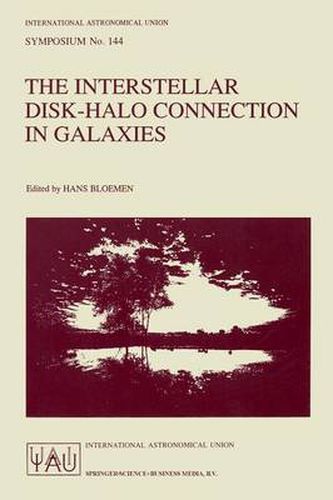Readings Newsletter
Become a Readings Member to make your shopping experience even easier.
Sign in or sign up for free!
You’re not far away from qualifying for FREE standard shipping within Australia
You’ve qualified for FREE standard shipping within Australia
The cart is loading…






This title is printed to order. This book may have been self-published. If so, we cannot guarantee the quality of the content. In the main most books will have gone through the editing process however some may not. We therefore suggest that you be aware of this before ordering this book. If in doubt check either the author or publisher’s details as we are unable to accept any returns unless they are faulty. Please contact us if you have any questions.
Highly ionized atoms in the general interstellar gas of the galactic disk were first detected through interstellar absorption line observations of 0 VI with the Copernicus satellite (Rogerson et al. 1973). Survey measurements by Jenkins (1978) of interstellar 0 VI absorption toward 72 stars demonstrated the general presence of 0 VI in the interstellar medium of the galactic disk. This researcIi. and parallel observational studies of the soft X-ra}‘ background (Williamson et al. 1974; McCammon et al. 1983; Marshall and ClarK 1984) provided direct evidence for the existence of hot low density gas in the mterstellar medium of the galactic disk. The extension of the aDsorption line studies to the distant gas of the galactic halo required the launch of the International Ultraviolet Explorer (IUE) satellite in 1978. The first measures of highly ionized gas m the galactic halo were obtained with the IDE when it was used to record high resolution spectra of bright stars in the Large Magellanic Cloud (Savage and de Boer 1979). Those early spectra revealed the presence of absorption by Si IV and C IV in the galactic nalo and have been followed by a number of surveys with IUE of nighly ionized gas in the galactic disk and halo (Savage and de Boer 1981; Pettini and West 1982; Savage and Massa 1987). The study of UV emission from highly ionized gas in the halo has progressed more slowly because of the intrinsic faintness of the emission.
$9.00 standard shipping within Australia
FREE standard shipping within Australia for orders over $100.00
Express & International shipping calculated at checkout
This title is printed to order. This book may have been self-published. If so, we cannot guarantee the quality of the content. In the main most books will have gone through the editing process however some may not. We therefore suggest that you be aware of this before ordering this book. If in doubt check either the author or publisher’s details as we are unable to accept any returns unless they are faulty. Please contact us if you have any questions.
Highly ionized atoms in the general interstellar gas of the galactic disk were first detected through interstellar absorption line observations of 0 VI with the Copernicus satellite (Rogerson et al. 1973). Survey measurements by Jenkins (1978) of interstellar 0 VI absorption toward 72 stars demonstrated the general presence of 0 VI in the interstellar medium of the galactic disk. This researcIi. and parallel observational studies of the soft X-ra}‘ background (Williamson et al. 1974; McCammon et al. 1983; Marshall and ClarK 1984) provided direct evidence for the existence of hot low density gas in the mterstellar medium of the galactic disk. The extension of the aDsorption line studies to the distant gas of the galactic halo required the launch of the International Ultraviolet Explorer (IUE) satellite in 1978. The first measures of highly ionized gas m the galactic halo were obtained with the IDE when it was used to record high resolution spectra of bright stars in the Large Magellanic Cloud (Savage and de Boer 1979). Those early spectra revealed the presence of absorption by Si IV and C IV in the galactic nalo and have been followed by a number of surveys with IUE of nighly ionized gas in the galactic disk and halo (Savage and de Boer 1981; Pettini and West 1982; Savage and Massa 1987). The study of UV emission from highly ionized gas in the halo has progressed more slowly because of the intrinsic faintness of the emission.